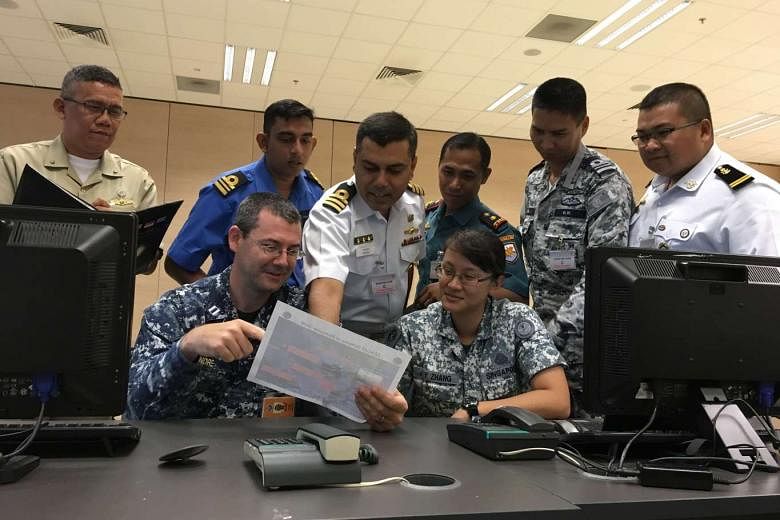SINGAPORE - A maritime security exercise that brings together nine countries including the United States began in Singapore on Monday (Aug 22).
Called South-east Asia Cooperation and Training (Seacat), the exercise will focus on anti-piracy and search and rescue operations, said Lieutenant-Commander Arlo Abrahamson, a spokesman for the US Seventh Fleet.
The exercise also seeks to increase cooperation on tackling smuggling and other illicit activities.
About 300 personnel and 12 vessels including navy ships and patrol boats from countries including Malaysia and Indonesia and two P8 maritime patrol aircraft are involved, said Lieutenant-Commander Abrahamson.
Participating from Singapore will be a patrol vessel RSS Daring , one police coast guard boat and a maritime patrol aircraft.
The exercise starts today and ends on Friday.
"Seacat enables nations to work through complex maritime security challenges in a cooperative and inclusive environment," said Rear-Admiral Don Gabrielson, Commander of Task Force 73.
The exercise helps participating countries respond more effectively to maritime threats, and thus better defend the security of their seas, added Rear-Admiral Gabrielson.
During the five-day exercise, officers from participating countries will receive different pieces of information from exercise facilitators relating to issues such as suspect vessels in nearby waters, said Captain H.B. Le from the US Navy, who is assisting with tactical control of the exercise.
These waters include the Straits of Malacca and Singapore, the Andaman Sea or the South China Sea, he added.
In the Changi Naval Base C2 coordination centre, officers from participating countries will aggregate this information and develop plans, he said.
They will then send instructions to those ships or aircraft stationed in nearby waters as part of the exercise from here, he added. The ships will investigate and simulate the boarding of ships if necessary, he said.
A boarding happens when naval police notify a vessel at sea that it wants to come on board. Boardings in the real world may also be forced, he said.
Seacat 2016 continues the trend of increasing complexity and increased participation into the exercise, Rear Admiral Gabrielson said.

